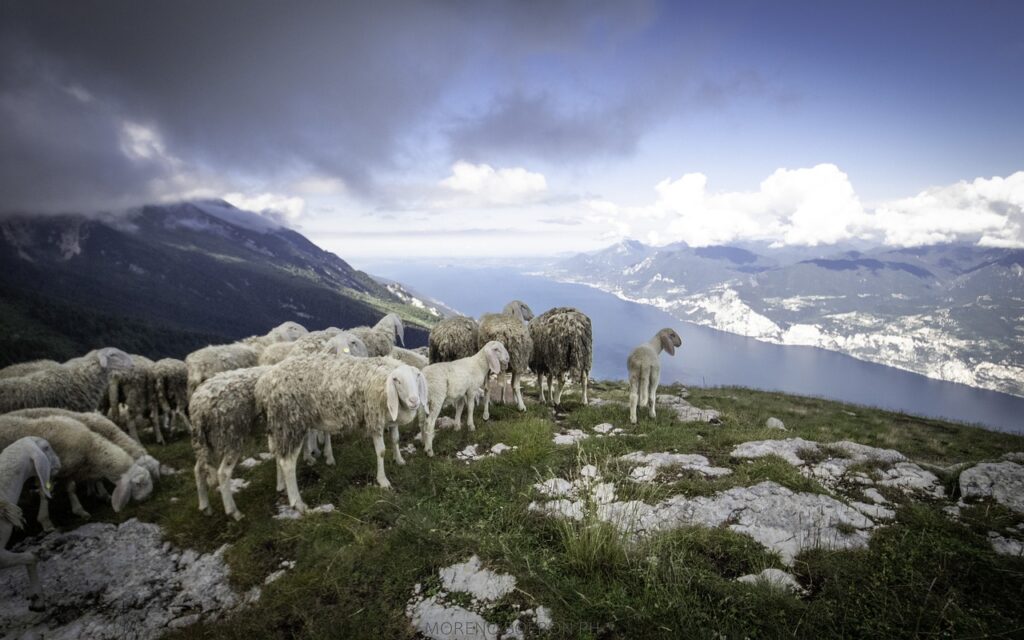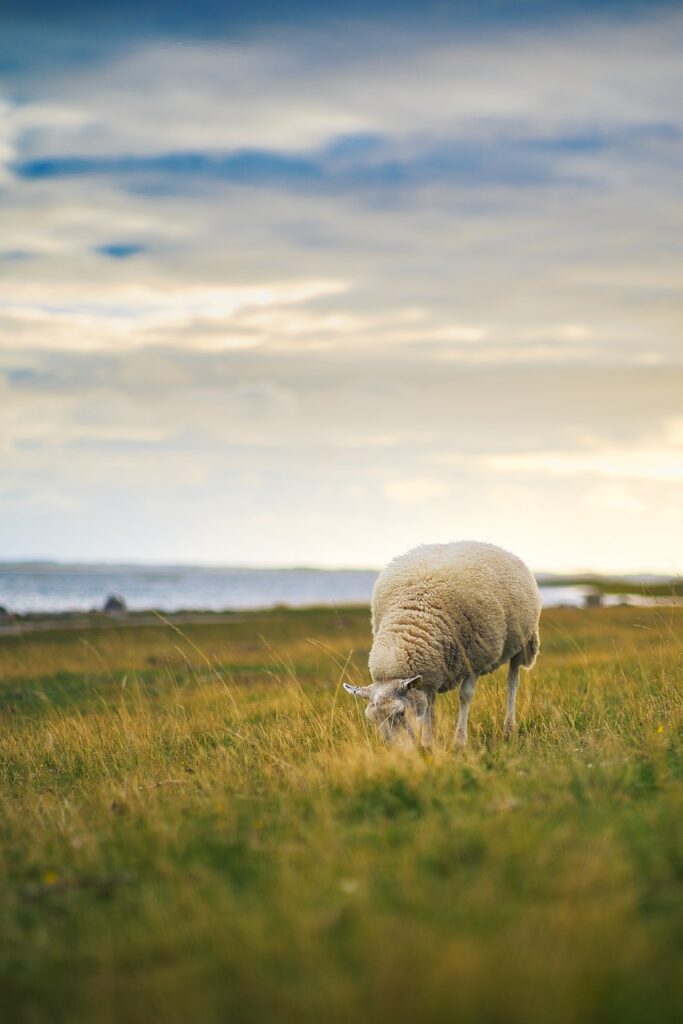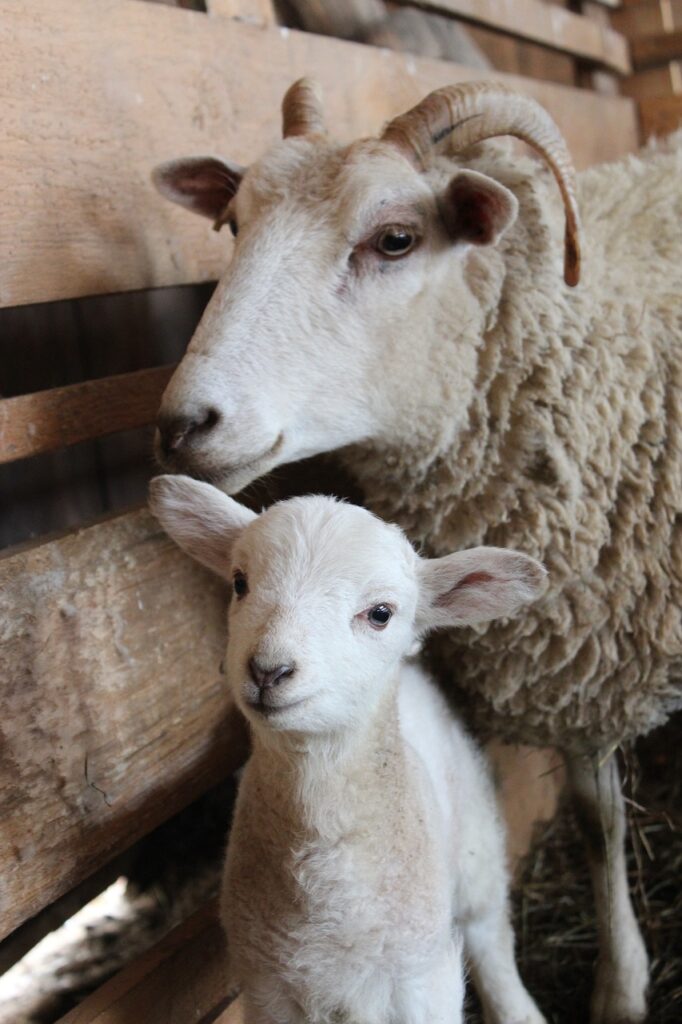Rotational grazing is a sustainable agricultural practice that involves moving livestock through a series of paddocks or pastures, allowing vegetation to recover while optimizing animal health and productivity. In this blog post, we explore the benefits, strategies, and considerations for implementing rotational grazing specifically for sheep.
Understanding Rotational Grazing
Rotational grazing is based on the principle of managing grazing pressure and allowing forage plants to regenerate. For sheep, this means dividing a larger grazing area into smaller sections or paddocks and rotating the flock among them periodically. This practice mimics natural grazing patterns where animals move across landscapes, preventing overgrazing and promoting healthier pastures.

Benefits of Rotational Grazing for Sheep
1. Improved Pasture Health
Rotational grazing prevents overgrazing by giving vegetation adequate time to recover between grazing periods. This results in healthier pastures with more diverse and nutritious forage options for sheep.
2. Enhanced Soil Fertility
By allowing pastures to rest and recover, rotational grazing promotes better soil structure and fertility. Sheep manure is distributed more evenly across paddocks, enriching the soil with essential nutrients and organic matter.
3. Disease Prevention
Reducing stocking densities and rotating pastures can lower the risk of parasitic infestations and diseases among sheep. Cleaner grazing areas and improved hygiene contribute to overall flock health.
4. Increased Forage Utilization
Sheep graze more efficiently when given access to fresh, nutrient-rich pasture. Rotational grazing ensures that sheep have constant access to high-quality forage, which can boost growth rates and milk production in lactating ewes.
5. Environmental Sustainability
Rotational grazing minimizes soil erosion, preserves biodiversity, and reduces greenhouse gas emissions compared to continuous grazing systems. It aligns with sustainable farming practices by maintaining ecosystem balance and resilience.

Implementing Rotational Grazing Systems
1. Planning and Layout
Begin by assessing your grazing area and dividing it into manageable paddocks based on soil type, vegetation, and water availability. Use temporary fencing or electric fencing to create paddock boundaries that are easy to adjust as needed.
2. Grazing Management
Rotate sheep through paddocks based on forage growth and pasture conditions. Monitor grazing intensity to ensure that sheep do not stay in one paddock for too long, allowing vegetation to recover adequately.
3. Water and Infrastructure
Provide access to clean water in each paddock to ensure hydration and proper nutrient intake for sheep. Consider installing water troughs or utilizing mobile water tanks that can be moved with the flock.
4. Monitoring and Adaptation
Regularly assess pasture condition, soil health, and sheep performance to fine-tune your rotational grazing system. Adjust grazing periods and paddock sizes based on seasonal changes and flock dynamics.
Case Studies and Success Stories
1. [Farm Name/Region] Case Study
Describe a successful implementation of rotational grazing for sheep on a specific farm or region. Highlight improvements in pasture health, sheep productivity, and environmental outcomes as a result of adopting this practice.
2. Benefits of Local Conditions
Discuss how rotational grazing can be adapted to different geographical and climatic conditions. Showcase examples where local vegetation and weather patterns influence grazing strategies and outcomes.

Challenges and Considerations
1. Initial Investment
Setting up rotational grazing infrastructure may require initial investment in fencing, water systems, and pasture management tools. However, long-term benefits often outweigh these costs.
2. Learning Curve
Adopting rotational grazing requires knowledge of sheep behavior, pasture management principles, and grazing planning. Resources such as local agricultural extension services and workshops can provide valuable guidance.
Conclusion
Rotational grazing offers numerous benefits for sheep farmers seeking sustainable and efficient pasture management solutions. By improving pasture health, enhancing soil fertility, and promoting animal welfare, this practice contributes to long-term farm profitability and environmental stewardship. Embrace rotational grazing for your sheep operation to optimize productivity while preserving natural resources for future generations.